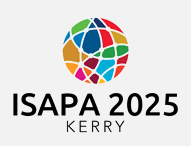Start Date
17-6-2025 12:30 PM
End Date
17-6-2025 2:00 PM
Abstract
Introduction Attention Deficit Hyperactivity Disorder (ADHD) is a common neurodevelopmental disorder characterized by inattention and hyperactivity-impulsivity, significantly affecting children’s development. Exercise intervention has gained attention as a non-pharmacological approach. This study explores the effects of exercise on improving attention in children with ADHD, aiming to promote their development and social inclusion, aligned with the ISAPA 2025 symposium theme “‘Inclusivizing’ our world.”
Methodology A single-case experimental design was used, divided into pre-intervention (B1) and post-intervention (B2) phases. The participant, an 8-year-old boy diagnosed with ADHD, underwent 11 weeks of intervention, with three 60-minute sessions per week. The program was designed based on the child’s motor skills and attention. Data from the d2 Test and classroom observations were analyzed using independent samples t-tests and regression analysis to evaluate the effects. Data randomness was tested by autocorrelation analysis. All analyses were done in SPSS 26.0.
Results Regression analysis showed significant improvement in both selective and sustained attention with increased exercise frequency(y selective attention B1=8.85-0.46x, y selective attention B2=12.96-0.56x, y sustained attention B1=2.65+0.15x, y sustained attention B2=6.76+0.28x). Independent samples t-tests indicated that attention in B2 was significantly better than in B1 (T selective = 11.407, T sustained = -6.380, p all < 0.01). The d2 Test of Attention showed that the concentration index increased from 98.5 to 112.3, and the error detection rate decreased by 15.2%.
Conclusions The study suggests that exercise intervention may improve attention in a child with ADHD, with a potential cumulative effect. Due to the small sample size, further research is needed to validate these findings.
References Vacher, C., Goujon, A., Romo, L., & Purper-Ouakil, D. (2020). Efficacy of psychosocial interventions for children with ADHD and emotion dysregulation: a systematic review. Psychiatry research, 291, 113151.
Glod, C. (2016). Diagnosis and treatment of ADHD in young adults. European Psychiatry, (33), S790-S791.
Mahmoud, M. B., Ali, N. B., Fray, S., Chebbi, S., & Fredj, M. (2021). Utility of EEG on attention deficit–hyperactivity disorder (ADHD). Epilepsy & Behavior, 114, 107583.
Recommended Citation
Wang, Zicheng; Mao, Xinyue; Chen, Meiyuan; and Wang, Xiaozan, "Exercise Intervention and Attention Improvement in a Child with ADHD: A Case Study" (2025). International Symposium of Adapted Physical Activity and International Symposium on Physical Activity and Visual Impairment and Deafblindness. 39.
https://sword.cit.ie/isapa/2025/day2/39
Exercise Intervention and Attention Improvement in a Child with ADHD: A Case Study
Introduction Attention Deficit Hyperactivity Disorder (ADHD) is a common neurodevelopmental disorder characterized by inattention and hyperactivity-impulsivity, significantly affecting children’s development. Exercise intervention has gained attention as a non-pharmacological approach. This study explores the effects of exercise on improving attention in children with ADHD, aiming to promote their development and social inclusion, aligned with the ISAPA 2025 symposium theme “‘Inclusivizing’ our world.”
Methodology A single-case experimental design was used, divided into pre-intervention (B1) and post-intervention (B2) phases. The participant, an 8-year-old boy diagnosed with ADHD, underwent 11 weeks of intervention, with three 60-minute sessions per week. The program was designed based on the child’s motor skills and attention. Data from the d2 Test and classroom observations were analyzed using independent samples t-tests and regression analysis to evaluate the effects. Data randomness was tested by autocorrelation analysis. All analyses were done in SPSS 26.0.
Results Regression analysis showed significant improvement in both selective and sustained attention with increased exercise frequency(y selective attention B1=8.85-0.46x, y selective attention B2=12.96-0.56x, y sustained attention B1=2.65+0.15x, y sustained attention B2=6.76+0.28x). Independent samples t-tests indicated that attention in B2 was significantly better than in B1 (T selective = 11.407, T sustained = -6.380, p all < 0.01). The d2 Test of Attention showed that the concentration index increased from 98.5 to 112.3, and the error detection rate decreased by 15.2%.
Conclusions The study suggests that exercise intervention may improve attention in a child with ADHD, with a potential cumulative effect. Due to the small sample size, further research is needed to validate these findings.
References Vacher, C., Goujon, A., Romo, L., & Purper-Ouakil, D. (2020). Efficacy of psychosocial interventions for children with ADHD and emotion dysregulation: a systematic review. Psychiatry research, 291, 113151.
Glod, C. (2016). Diagnosis and treatment of ADHD in young adults. European Psychiatry, (33), S790-S791.
Mahmoud, M. B., Ali, N. B., Fray, S., Chebbi, S., & Fredj, M. (2021). Utility of EEG on attention deficit–hyperactivity disorder (ADHD). Epilepsy & Behavior, 114, 107583.


